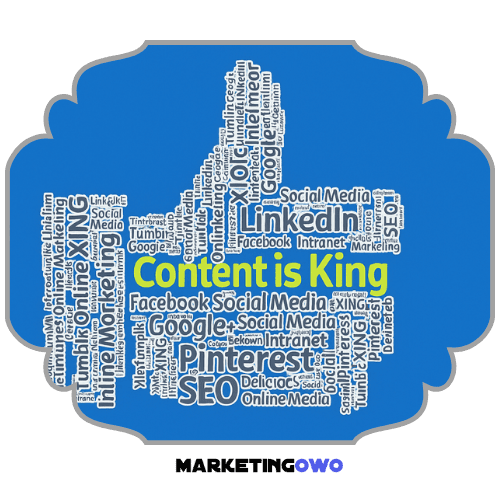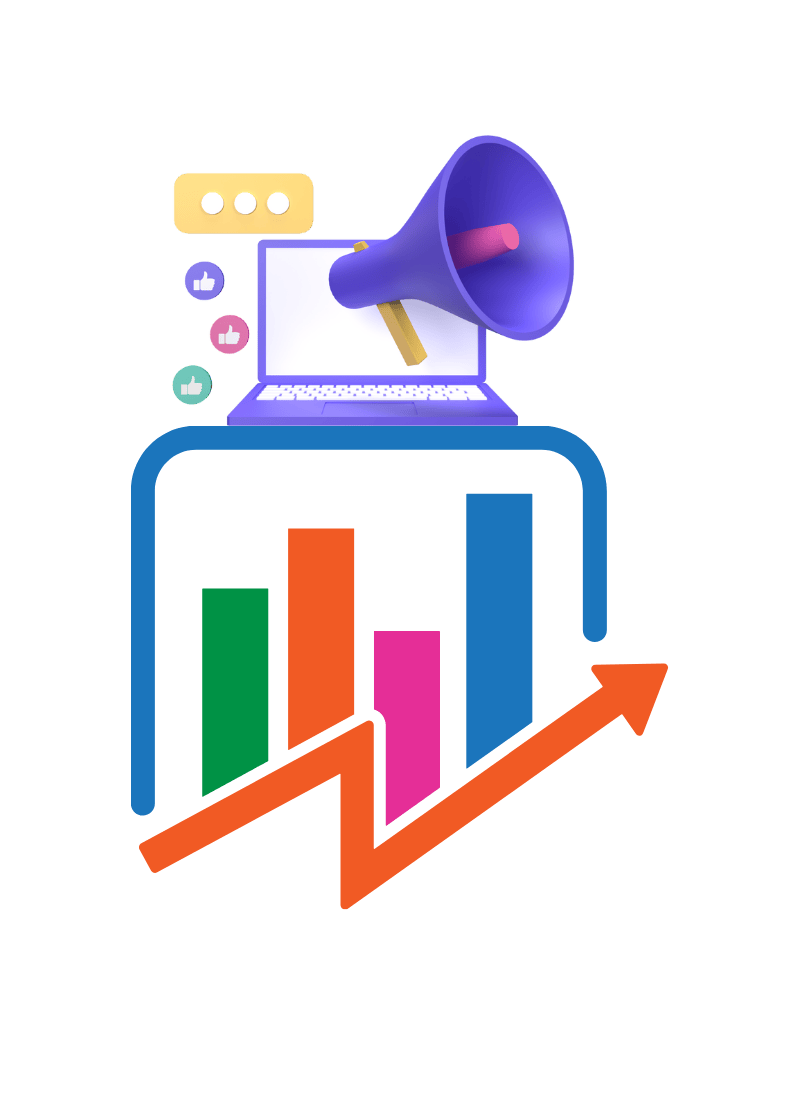Understanding Content Marketing ROI is crucial for B2B marketers and small business owners. This guide dives straight in: it shows how to track and calculate the return on investment (ROI) of your content efforts. You’ll learn clear steps—from setting goals to crunching numbers—to answer whether your content is paying off. We’ll also share real case examples (like how Eloqua earned $2.5M from a single campaign) and optimization tips to maximize ROI. By the end, you’ll know exactly how to measure content marketing ROI and improve your strategy.
What Is Content Marketing ROI?
Content marketing can build an audience and brand authority – but how do you measure its financial value? ROI (Return on Investment) for content marketing compares what you earn from content (like sales or qualified leads) against what you spent creating it. A simple formula is ROI = (Revenue from content – Cost of content) / Cost of content × 100%. For example, if you spend $100 on a blog that generates $200 in new business, your profit is $100 and ROI is 100%. This helps you know which content truly moves the needle.

Measuring content ROI is more complex than tracking a paid ad’s performance. Content often builds brand equity and long-term relationships, not immediate sales. Traditional ROI formulas sometimes fail to capture content’s true value. Even so, it’s essential to start measuring. As one expert notes, content still “works for us, no matter what those ‘isolated’ numbers say,” but tracking the right metrics helps justify investment and guide strategy. Marketing teams should therefore set realistic ROI benchmarks by looking at past campaigns and industry norms.
In practice, marketers who commit to measuring content ROI see tangible results. HubSpot reported that 82% of marketers who blog achieve positive ROI in inbound marketing. This shows that, with careful tracking and optimization, content can deliver a solid return. To get there, start by aligning content goals to business goals—whether that’s lead generation, sales, or audience growth. (See MarketingOWO’s guide to B2B content marketing strategies for more on goal-setting and strategy.)
Why Measure Content Marketing ROI?
Measuring ROI is about more than crunching numbers; it connects content efforts to business outcomes. ROI analysis lets you prove value and improve focus. For instance, if your SEO blog posts yield 23% ROI but your social media posts only 7%, you know where to allocate budget next quarter. It also forces you to pick meaningful metrics: tracking vanity metrics (like likes) won’t help if they don’t drive customers. By tying content to quantifiable results, you can answer tough questions like “Why invest in this content?” and gain buy-in from stakeholders.
Importantly, content ROI should consider long-term benefits too. Content builds an audience—a valuable asset that often drives sales indirectly. CMI’s experts urge marketers to think beyond immediate sales and account for brand lift, SEO traffic, and loyalty. Even if a piece of content doesn’t sell today, growing your audience (email subscribers, social followers) can pay off later.
However, businesses still expect numbers. The trick is to align goals and KPIs with your content’s purpose. For example, a lead-nurturing whitepaper might be measured by qualified leads generated, while a thought-leadership blog might use site traffic or backlink growth. Once goals are clear, you can pick the right ROI metrics. We’ll outline these steps next.
Step-by-Step Guide to Measuring Content Marketing ROI
- Set Clear Goals and KPIs. Begin by defining specific, measurable objectives for your content (e.g. “Generate 50 leads this quarter from our blog,” or “increase organic traffic 20% in 6 months”). CMI advises pinpointing the goal, target audience, metric, target number, and timeframe. For each content type, tie the goal to a key performance indicator (KPI). Common KPIs include: website visits, email signups, lead conversions, or new customers. Align these with business goals (sales revenue, MQLs, etc.). Establish baseline benchmarks from past campaigns or industry data so you have a reference point.
- Calculate Your Content Investment. Next, tally all costs involved in creating and promoting your content. This includes:
- Production costs: time spent by team members (hours × hourly rate) plus any freelance, design or production fees. For example, if a writer is paid $20/hour and spends 4 hours on a blog post, the labor cost is $80.
- Promotion costs: ad spend (social ads, PPC), paid distribution, or software/tools used.
- Overhead: tools like design software, CMS fees, or video equipment depreciation if significant.
- Track Key Performance Metrics. With goals set, now collect data on performance. Use web analytics, CRM, and marketing platforms to track the KPIs chosen in Step 1. Important metrics might include:
- Traffic and Engagement: pageviews, time on page, social shares (tells you which content attracts audience).Leads and Conversions: number of form submissions, downloads, demo requests that originated from each content piece (use tracking URLs, UTM parameters, or campaign tags).Sales Revenue: if possible, attribute content-influenced sales. For example, track how many leads from content became customers and their deal size.
- Assign Monetary Value to Results. To compute ROI, translate your results into dollar terms. Two common methods:
- Revenue Attribution: Directly calculate revenue generated by content-driven leads. For instance, if four leads from a blog became clients, multiply by average deal value. HubSpot’s example: a law firm earned 4 new clients worth $2,000 each from 5 blogs. Their revenue was $8,000.
- Lead Value Estimation: If direct attribution is tricky, estimate: use your average lead-to-customer conversion rate and customer value. For example, if 50% of leads convert and average sales are $2,000, then every lead is “worth” $1,000. Multiply that by leads from content to estimate revenue.
- Calculate ROI. Use the standard formula: ROI % = [(Revenue – Cost) ÷ Cost] × 100. For example, if your content generated $5,000 in revenue and cost $1,000 to produce/promote, ROI = (($5,000–$1,000)/$1,000)×100 = 400%. A negative ROI indicates a loss, signaling you may need to tweak your strategy. HubSpot shows an example: 8 leads (4 clients at $2K each = $8,000 revenue) from $1,000 spent yields 700% ROI. Calculations can be done in a spreadsheet or ROI calculator. The point is to quantify the return. You might measure ROI per content piece or overall for a campaign. Over time, track ROI for multiple pieces to see trends (HubSpot suggests checking five pieces monthly to identify winners vs. losers).
Real-World Examples of Content Marketing ROI
Content ROI isn’t just theory – many brands show it works. These examples illustrate how content drove revenue or leads:
- Eloqua (Marketing Automation) – Eloqua launched an infographic and eBook campaign and generated $2.5 million in revenue from it. This huge ROI came from focused, valuable content that attracted qualified leads.
- Ariba (Procurement Software) – B2B firm Ariba used SlideShare to publish conference content. It attracted over 40,000 views and generated 400 leads. By tracking content views and leads via SlideShare analytics, they clearly measured the ROI of that content.
- Law Firm (Legal Services) – (From HubSpot) A small law firm wrote 5 blog posts on tenant rights, costing $1,000 total. Those posts led to 4 new clients worth $2,000 each. With $8,000 in revenue from $1,000 spend, the firm’s ROI was 700%. This example shows even small businesses can see big returns if they track conversions and attribute them properly.
- HubSpot (SaaS) – As a content-centric company, HubSpot generates over 500,000 leads per month from its blogs, ebooks, webinars, etc. Last year, their content drove 81% revenue growth to $29M. (They attribute content for educating and converting users.) While not a step-by-step ROI case, it highlights how thought-out content strategy scales revenue over time.
These cases prove content can deliver concrete results. The key lesson: track everything and use data to link content to outcomes.
Tips to Optimize Your Content Marketing ROI
Once you’re measuring, you can optimize. Here are best practices to boost ROI over time:
- Analyze and Adjust: Regularly review which content yields the highest ROI. If certain topics or formats (e.g. video vs. text) perform better, shift focus there. HubSpot’s analysis shows if video posts drive more ROI than blogs, you should double down on video.
- Repurpose High-Value Content: Maximize the use of content that already works. Turn a successful webinar into blog posts, infographics, or an eBook. This spreads ROI to multiple channels.
- Improve CTAs and Landing Pages: Make sure every content piece has a clear call-to-action aligned with your goals (e.g. “Download whitepaper” or “Get a quote”). Optimized landing pages will turn more visits into leads, increasing your ROI.
- Refine SEO and Targeting: Use keyword research to drive targeted traffic. More organic visitors means lower acquisition cost. Technical SEO and on-page improvements can boost visibility, so you get more ROI for the same content.
- Leverage Analytics Tools: Tools like Google Analytics 4 or content marketing platforms can automate tracking (e.g., UTM tagging, multi-touch attribution). Setting up proper tracking means you capture more accurate ROI data without extra work.
- Align Content with Sales: Ensure marketing and sales teams agree on how leads from content are followed up. Strong handoff increases conversion rates and thus ROI.
- Invest in Quality Over Quantity: A few well-researched, high-impact pieces often beat a dozen mediocre ones. Quality content tends to earn more links, shares, and conversions, multiplying its ROI.
For B2B marketers, integrating these insights into your overall strategy is key. In fact, MarketingOWO’s B2B content marketing strategies guide emphasizes aligning content closely with sales funnels and audience needs. Apply that strategy here: craft content around buyer interests, then use precise metrics to judge its payoff.
Conclusion
Measuring content marketing ROI demystifies whether your content spends are worth it. By following these steps—setting goals, tracking costs and results, and calculating returns—you link creative content efforts to real business impact. Remember: “Content is King”【28†】, but even kings need accounting. Start small (measure a campaign or two), learn from the data, and iterate. Over time, you’ll build a content program that not only educates and engages but also drives measurable revenue.
If you found this guide useful, please share it with your network or subscribe for more insights. Have a question or tip about content ROI? Let us know in the comments or explore more resources on our site. Your next high-ROI content campaign is just a strategy away—start measuring today!
I hope the above article: ‘Measure Content Marketing ROI: A Step-by-Step Guide’ will help you to grow business. Join our community




